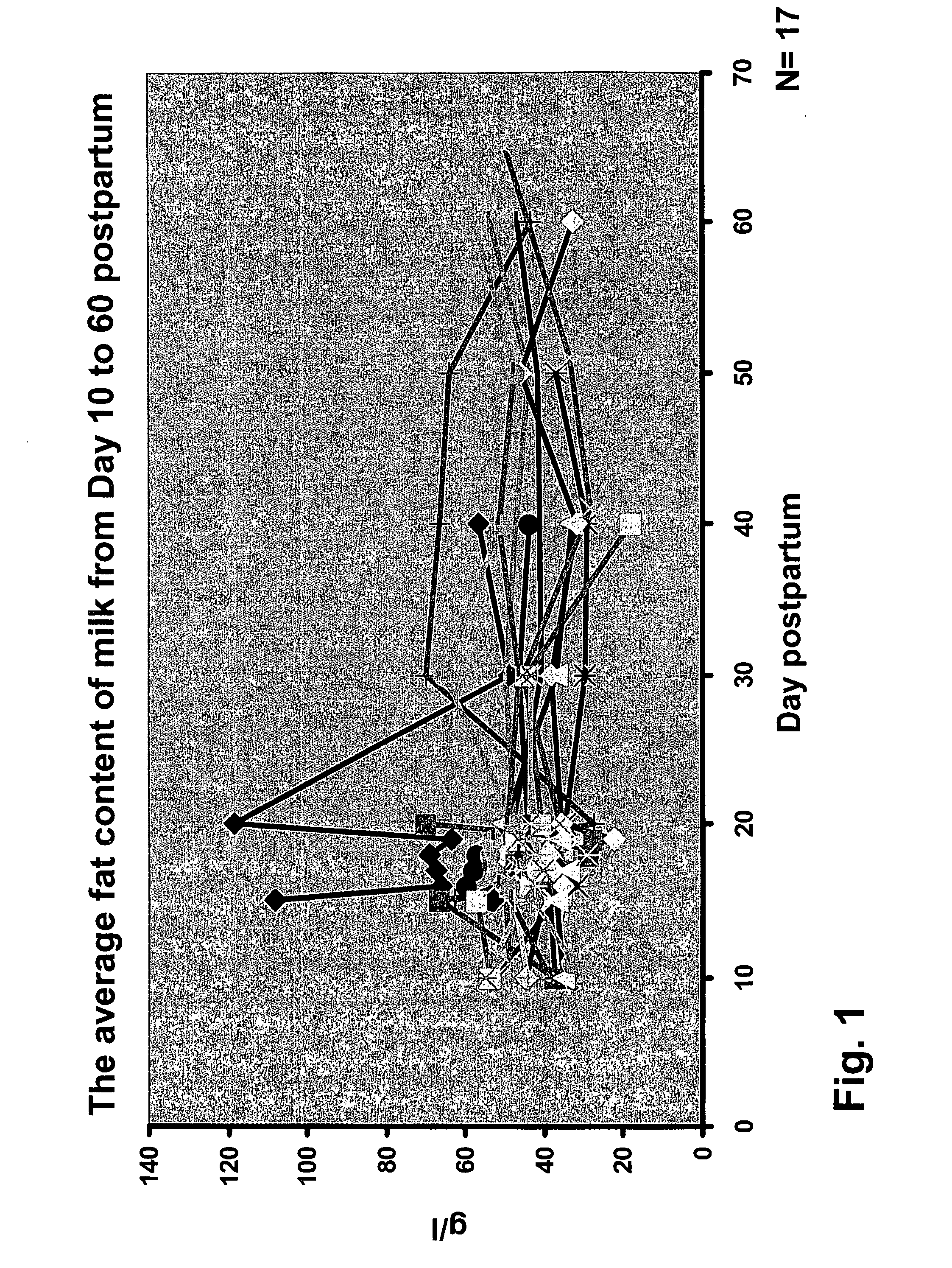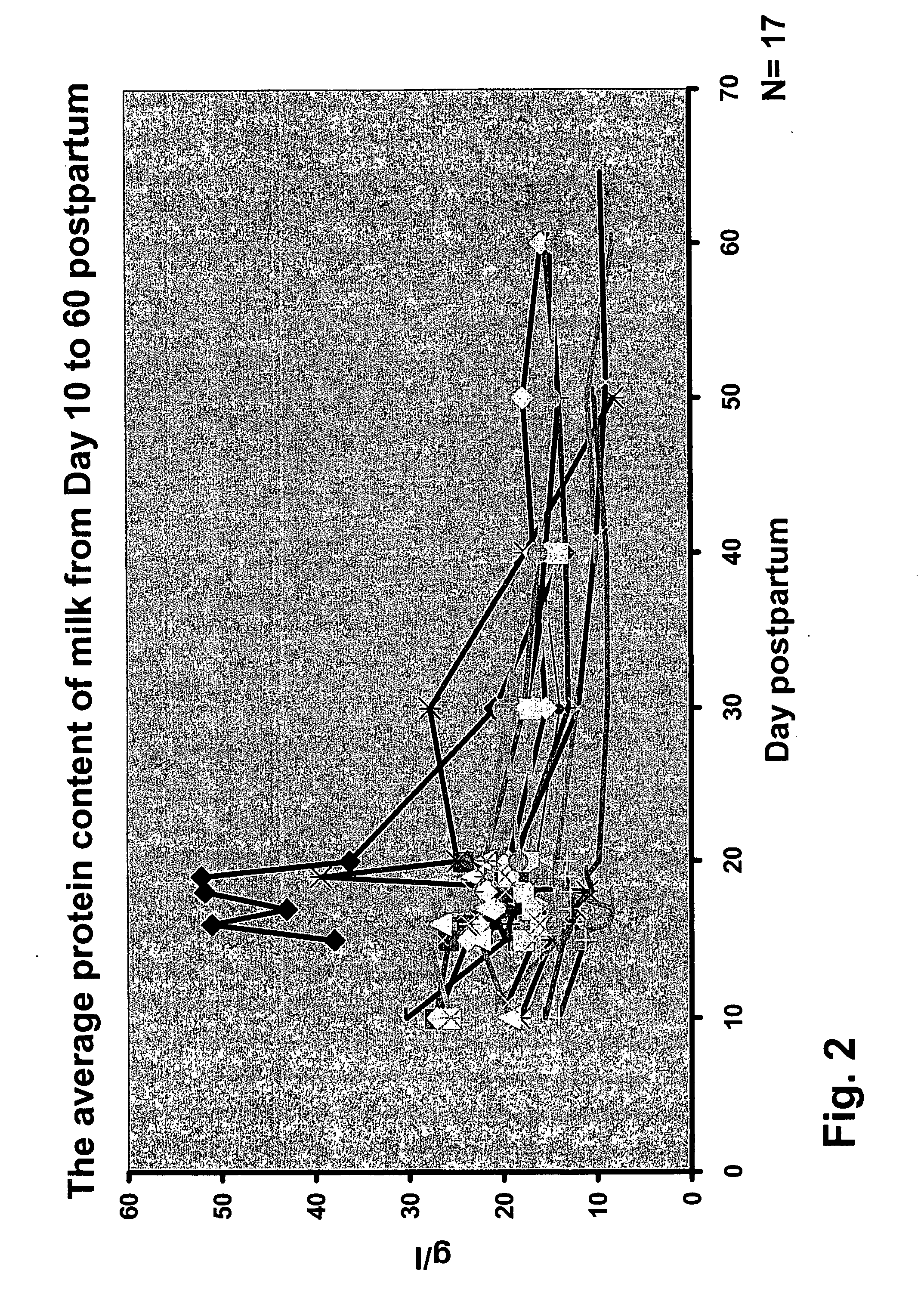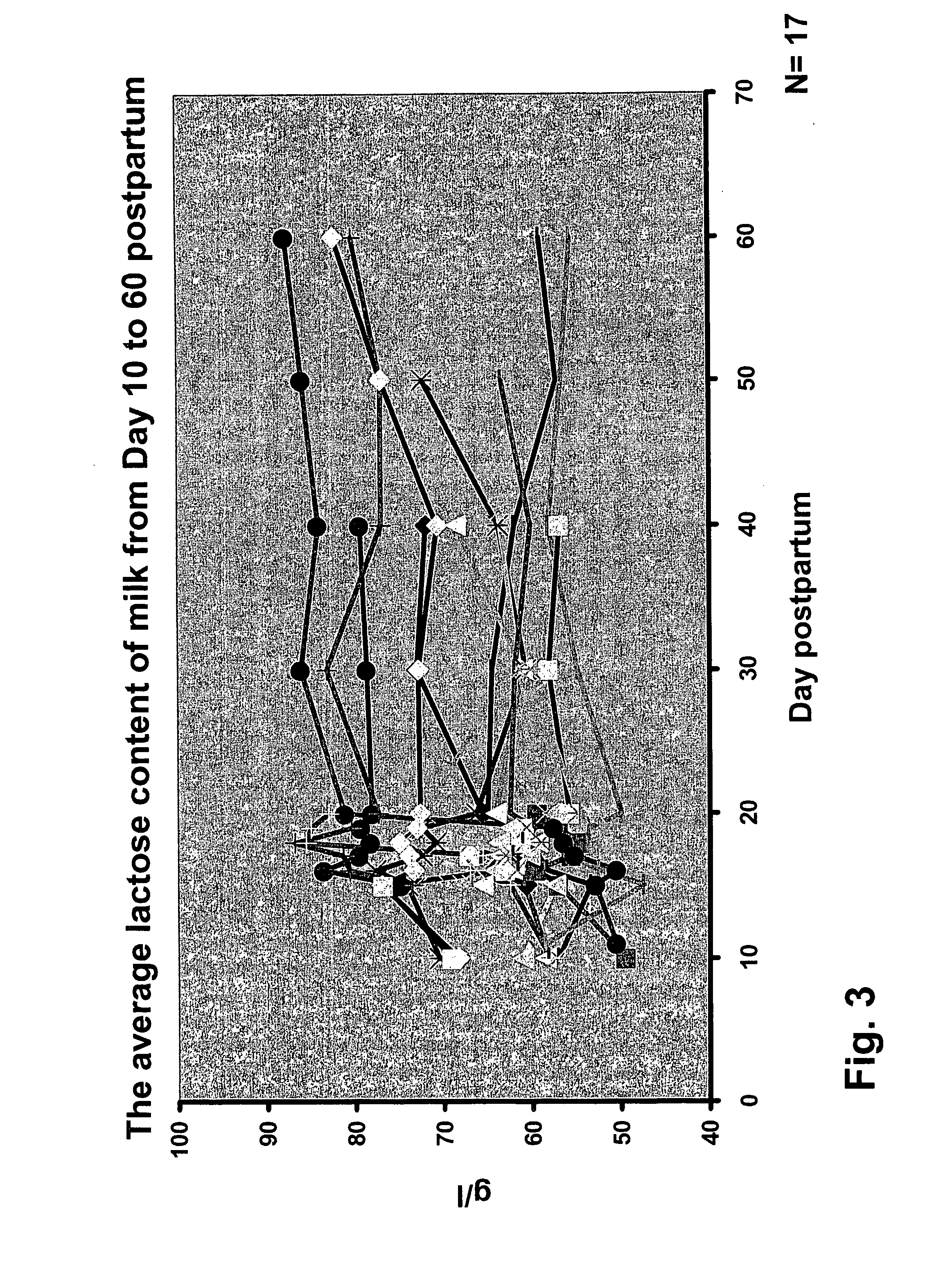Method for Analysing and Treating Human Milk and System Therefore
a human milk and system technology, applied in the field of human milk analysis and system, can solve the problems that donor milk does not always supply the appropriate mixture of nutrients and immunological components, and achieve the effect of improving the nutrition of an infan
- Summary
- Abstract
- Description
- Claims
- Application Information
AI Technical Summary
Benefits of technology
Problems solved by technology
Method used
Image
Examples
example 1
[0078]A liquid sample of human milk sample (100 ml) was taken. The human milk was taken from a mother of a preterm baby at >10 days and <90 days, respectively, after birth. The milk sample was taken from milk that had been expressed from the breast over the course of a day. The principal composition of this milk can be summarised as follows: 3.8% fat, 0.8% protein and 5.2% carbohydrate. The actual energy content of the milk sample was determined. The non-aqueous (cream) fraction of the milk was separated from the aqueous fraction by centrifugation at 10'000 rpm and a temperature of 4° C. and the top layer (the cream) was carefully removed and a known volume was added to 140 ml of the mother's own milk to increase the energy content of her milk to the recommended level for a preterm baby of the particular weight and age.
[0079]The preterm infant's growth and development could be observed to be similar to the one occurring in utero.
[0080]In addition, there may be a pasteurization and a...
example 2
[0081]A liquid sample of human milk sample (150 ml) was taken. The human milk was taken from a mother of a special need baby (preterm or sick term baby) at >10 days and 9 hours run tests on the final set up. A mean level of protein content is obtained which is concentrated in each hour and the final product is analysed in order to obtain a true protein content. Once the aqueous fraction had been concentrated 5 fold a known volume of the concentrated milk protein was added to 130 ml of mother's own milk to increase the protein content of the milk to the recommended level for a preterm baby or sick term baby of the particular weight and age.
[0082]The preterm infant's growth and development could be observed to be similar to the one occurring in utero and the term infant's growth and development could be observed to be similar to that of a term baby of a similar age.
[0083]In addition, there may be a pasteurization and a standard hospital grade of bacteria assessment.
example 3
[0084]A liquid sample of human milk sample (500 ml) was taken. The human milk was taken from a human milk donor at <90 days after birth. The milk sample was taken from milk that had been expressed from the breast over the course of a few days and stored frozen. The principal composition of this milk can be summarised as follows: 3.8% fat, 0.8% protein and 5.2% carbohydrate. The concentration of protein in the milk sample was determined. The non-aqueous (cream) fraction of the milk was separated from the aqueous fraction by centrifugation at 10'000 rpm and 4° C. and the top layer (the cream) was carefully removed. The aqueous layer was then concentrated by passing it through a filter that was impervious to milk proteins. Preferably the same type of filter and temperature were used as in example 2. Once the aqueous fraction had been concentrated 5 fold in the same way as mentioned in example 2 the concentrated solution was centrifuged at high speed, i.e. 210'000 rpm and 4° C., to prec...
PUM
| Property | Measurement | Unit |
|---|---|---|
| temperature | aaaaa | aaaaa |
| volume | aaaaa | aaaaa |
| volume | aaaaa | aaaaa |
Abstract
Description
Claims
Application Information
 Login to View More
Login to View More - R&D
- Intellectual Property
- Life Sciences
- Materials
- Tech Scout
- Unparalleled Data Quality
- Higher Quality Content
- 60% Fewer Hallucinations
Browse by: Latest US Patents, China's latest patents, Technical Efficacy Thesaurus, Application Domain, Technology Topic, Popular Technical Reports.
© 2025 PatSnap. All rights reserved.Legal|Privacy policy|Modern Slavery Act Transparency Statement|Sitemap|About US| Contact US: help@patsnap.com



